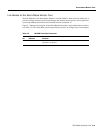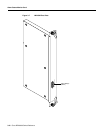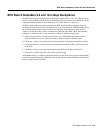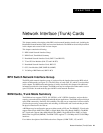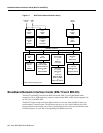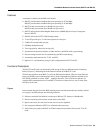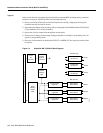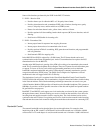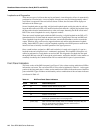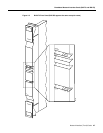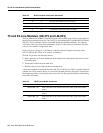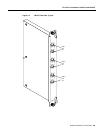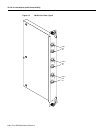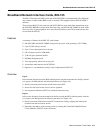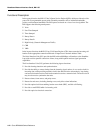
Network Interface (Trunk) Cards 4-5
Broadband Network Interface Cards (BNI-T3 and BNI-E3)
Some of the functions performed by the PLPP in the BNI-3T3 include:
• PLPP— Receiver Side
— Provides frame sync for either the M23 or C-bit parity frame format.
— Provides alarm detection and accumulates B3ZS code violations, framing errors, parity
errors, C-bit parity errors, and far end bit error (FEBE) events.
— Detects far end alarm channel codes, yellow alarm, and loss of frame.
— Provides optional cell descrambling, header check sequence (HCS) error detection, and cell
filtering.
— Small receive FIFO buffer for incoming cells.
• PLPP—Transmitter Side
— Inserts proper frame bit sequence into outgoing bit stream.
— Inserts proper alarm codes to be transmitted to the far end.
— Provides optional ATM cell scrambling, HCS generation and insertion, and programmable
null cell generation.
— Small transmit FIFO for outgoing cells.
In the BNI-3E3 the PLPP is replaced by a G.804 framer. The E3 framer obtains end-to-end
synchronization on the Frame Alignment bytes. And a E3 transmitter/receiver replaces the DS3
transmitter/receiver for the BNI-3E3.
Another major BNI function is queuing of the ATM cells waiting to be transmitted to the network
trunk. This is controlled by the Queue Service Engine. There are 32 queues for each of the three ports
to support 32 classes of service, each with its programmable parameters such as minimum
bandwidth, maximum bandwidth, and priority. Queue depth is constantly monitored to provide
congestion notification (EFCN) status. The Queue Service Engine also implements a discard
mechanism for the cells tagged with Cell Loss Priority.
The destination of each cell is contained in the Virtual Path Identifier/Virtual Circuit Identifier
VPI/VCI) field of the cell header. This is translated to a Logical Connection Number via table lookup
in the Network Address Table. Both terminating and through connections can coexist on a port.
A Serial Interface Module (SIM) provides cell interface to the StrataBus backplane. This operates at
800 Mbps. It provides a serial-to-parallel conversion of the data and loopback and pseudo-random
bit generation for test purposes.
Both BNI-T3 and BNI-E3 cards support two clock modes that are selected by the system operator
through software control. Normal clocking uses receive clock from the network or user device for
incoming data and supplies transmit clock for outgoing data. The clock obtained can be used to
synchronize the node if desired. Loop timing uses receive clock from the network for the incoming
data and turns that same clock around for timing the transmit data to the network or connecting CSU.
Bandwidth Control
The transmit bandwidth can be throttled down for certain applications. For example, when
interfacing with an IPX switch E3 ATM Trunk Card, the trunk transmit rate is limited to 40,000
cells/second. If a T2 trunk adapter is used, the trunk transmit rate is limited to 14,000 cells/second.



